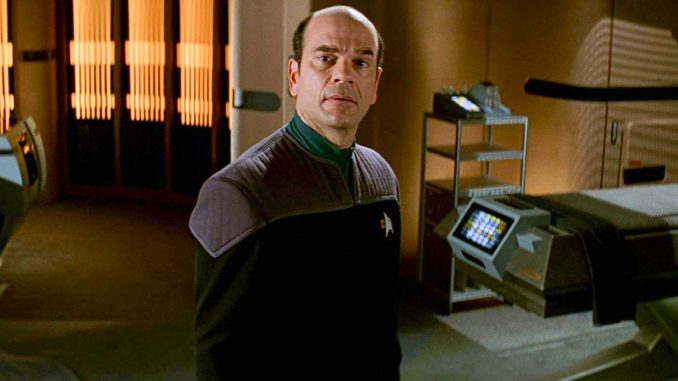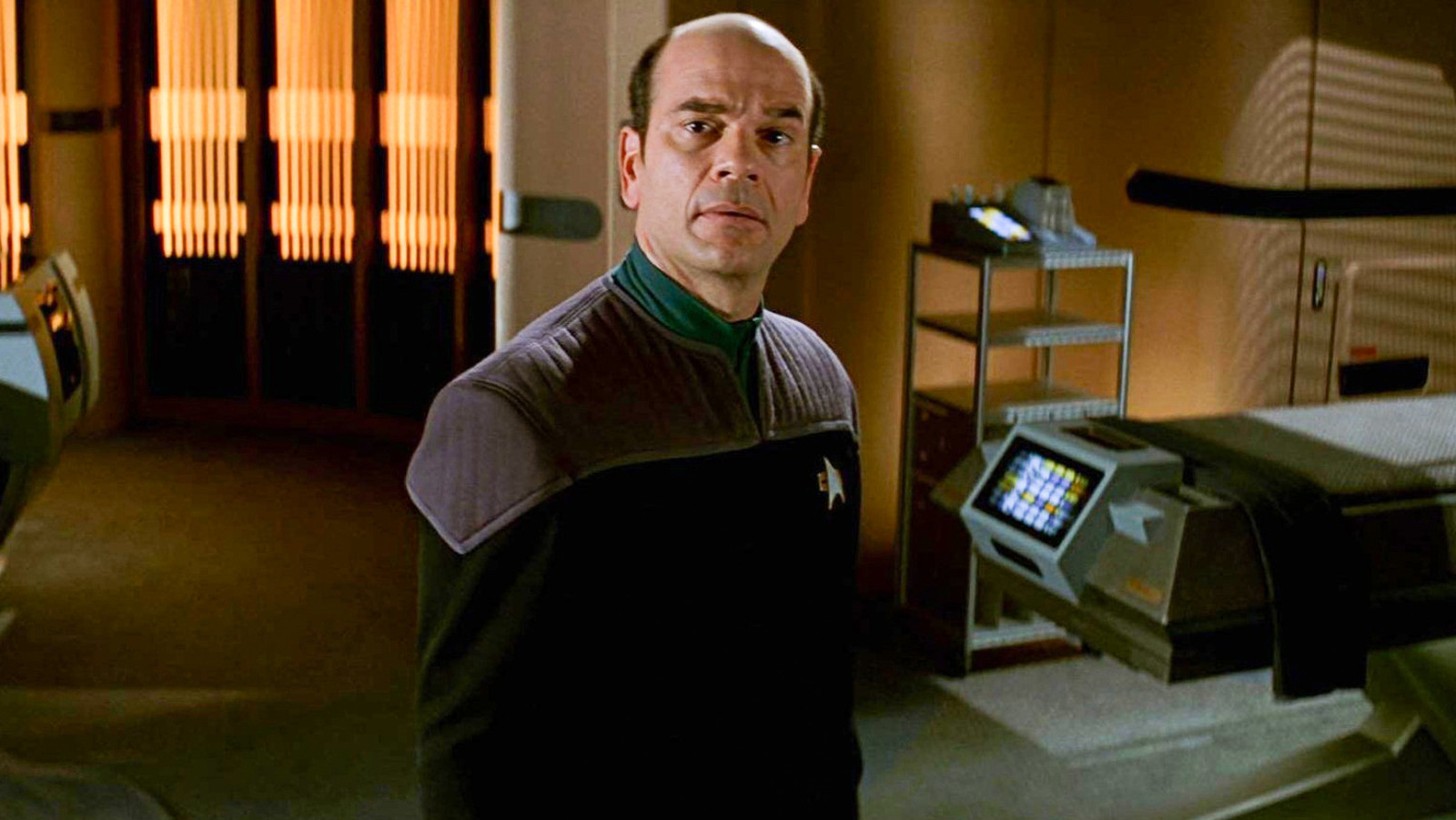

In the early episodes of “Voyager,” the EMH mentioned that his program was designed by someone named Dr. Lewis Zimmerman, a human engineer from Earth. The EMH didn’t have the same personality as Zimmerman, but he looked exactly like him. Trekkies finally got to meet the real Dr. Zimmerman in the “Star Trek: Deep Space Nine” episode “Dr. Bashir, I Presume?” In that episode, DS9’s chief medical officer, Doctor Bashir (Alexander Siddig) is approached by Dr. Zimmerman as the potential next model for a new series of EMHs he is developing: the Mark III model (Mark II was played by Andy Dick). The new EMHs would also emulate Dr. Bashir’s personality, as the latest model lacked manners.
As one might assume, emergency medical holograms are simple projections of people and have no blood, organs, or even skin under their uniforms. In fact, by pressing a few buttons, an EMH can deactivate its force field function and become an immaterial projection of light. In later episodes of “Voyager”, it was explained that the EMH has no genitals, although it eventually became intelligent enough to program a set onto its body.
The EMH was originally confined to the infirmary, as the infirmary’s walls were equipped with its own projectors. Later, Voyager’s intelligent engineers found a way to transfer the Doctor’s massive program to the ship’s holodeck, and he began visiting his imaginary holographic worlds.
Furthermore, the EMH could not initially turn on and off, as it was only supposed to be used in emergencies. However, as the hologram began to develop consciousness and a sense of agency, Voyager’s own intelligent engineers gave it the ability to turn on and off at will.
Leave a Reply